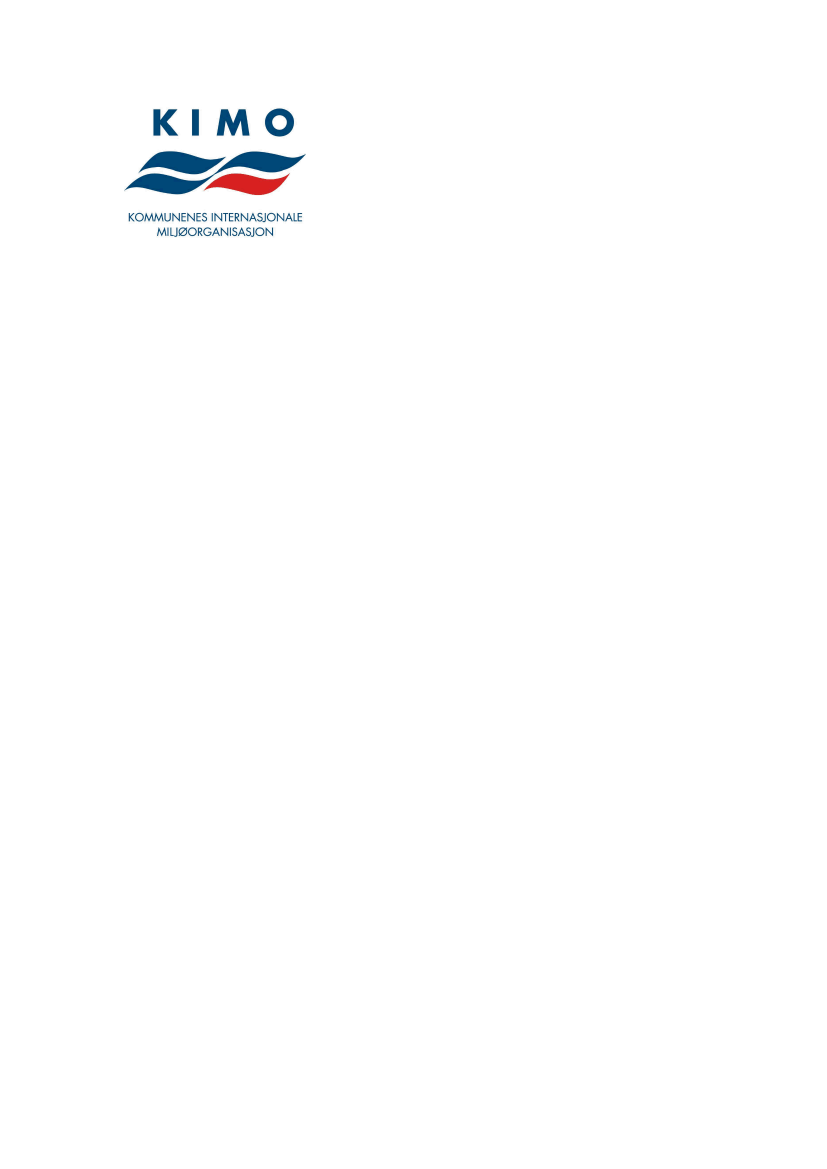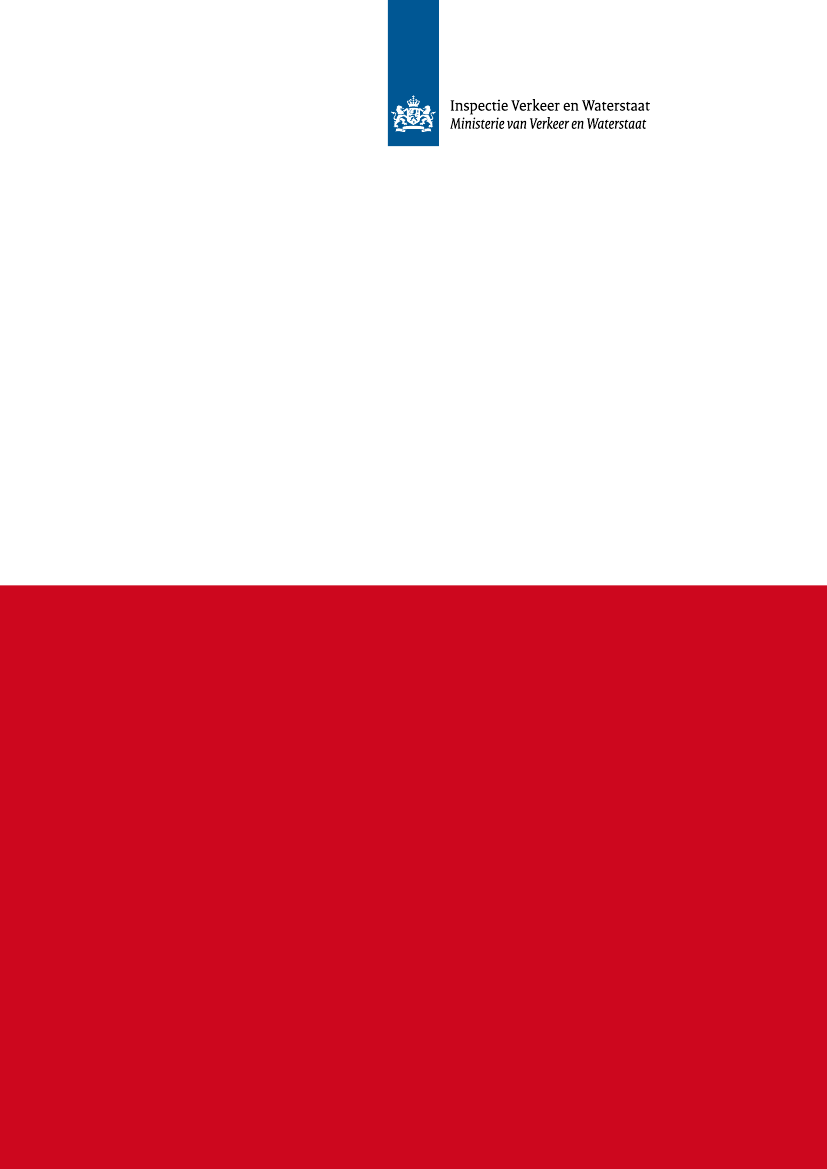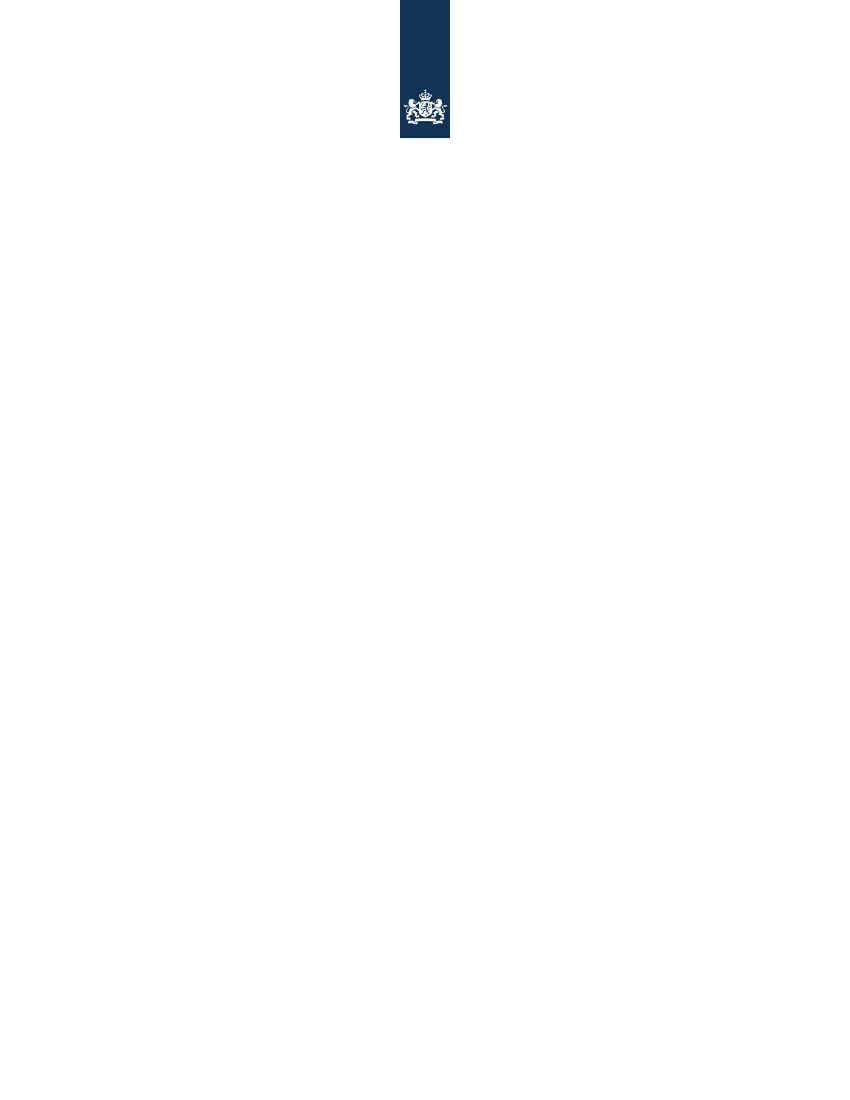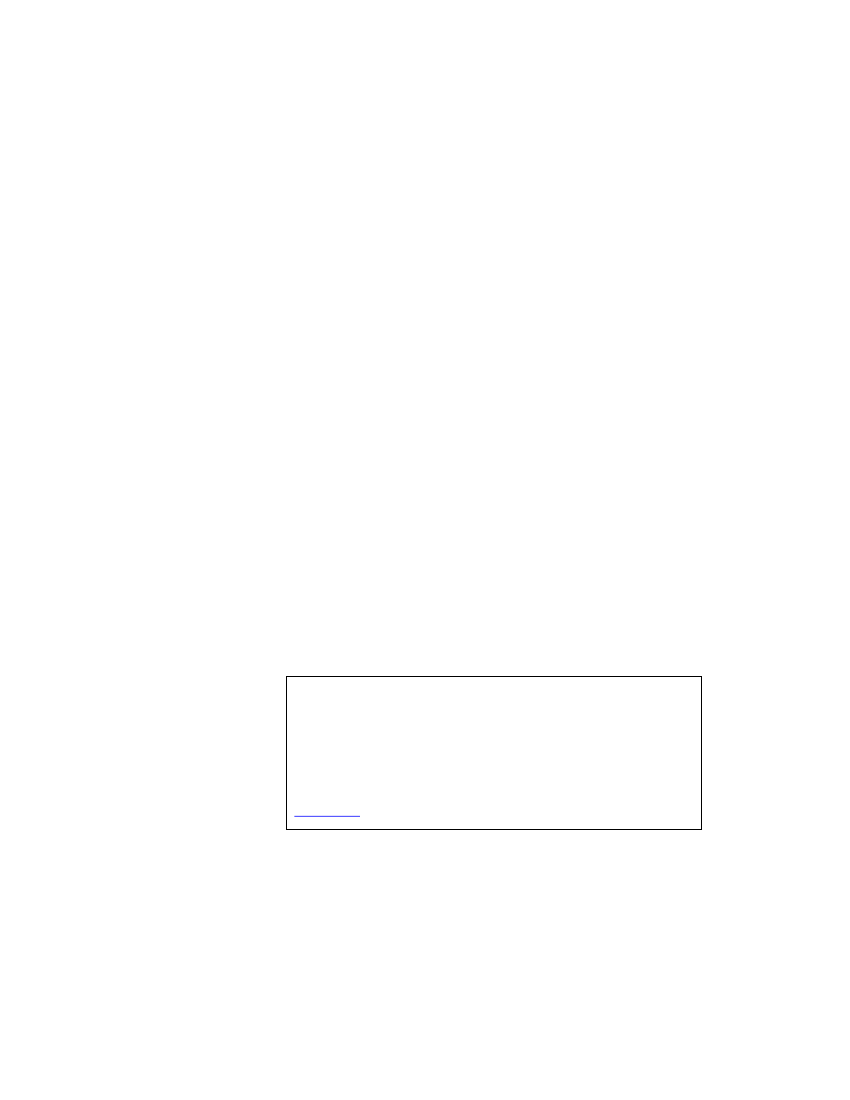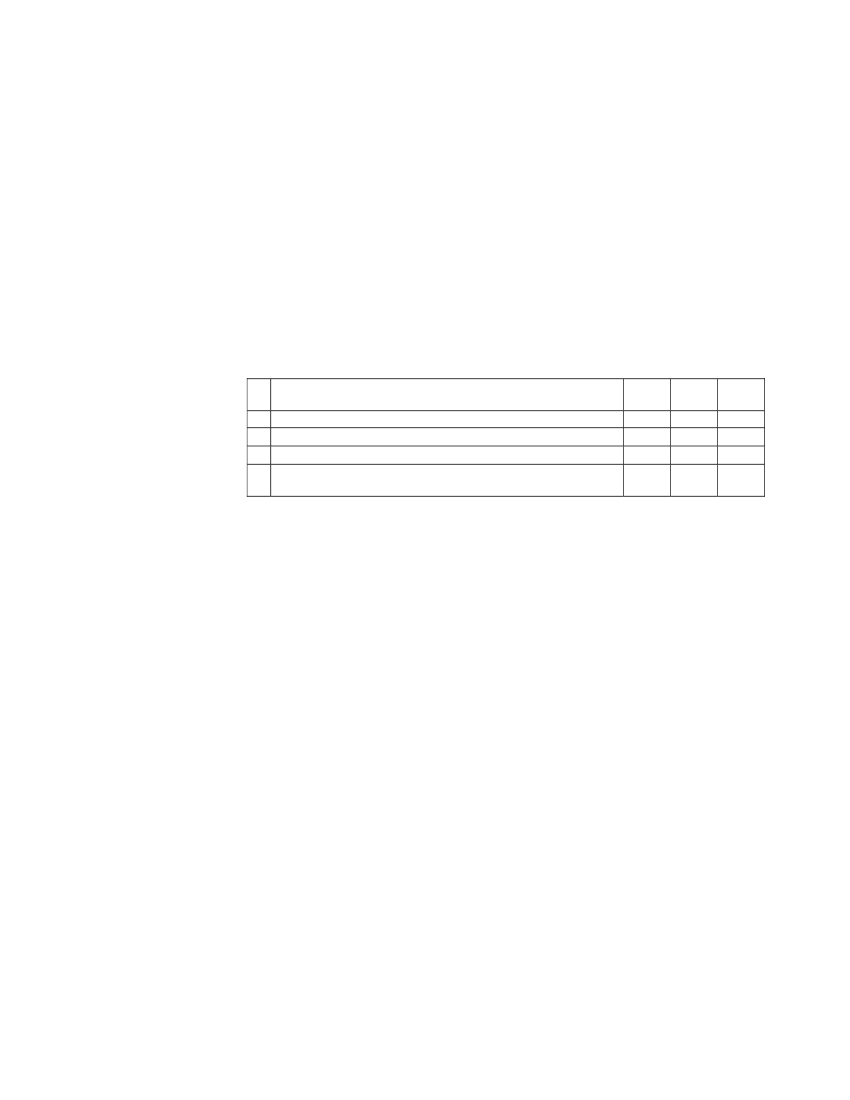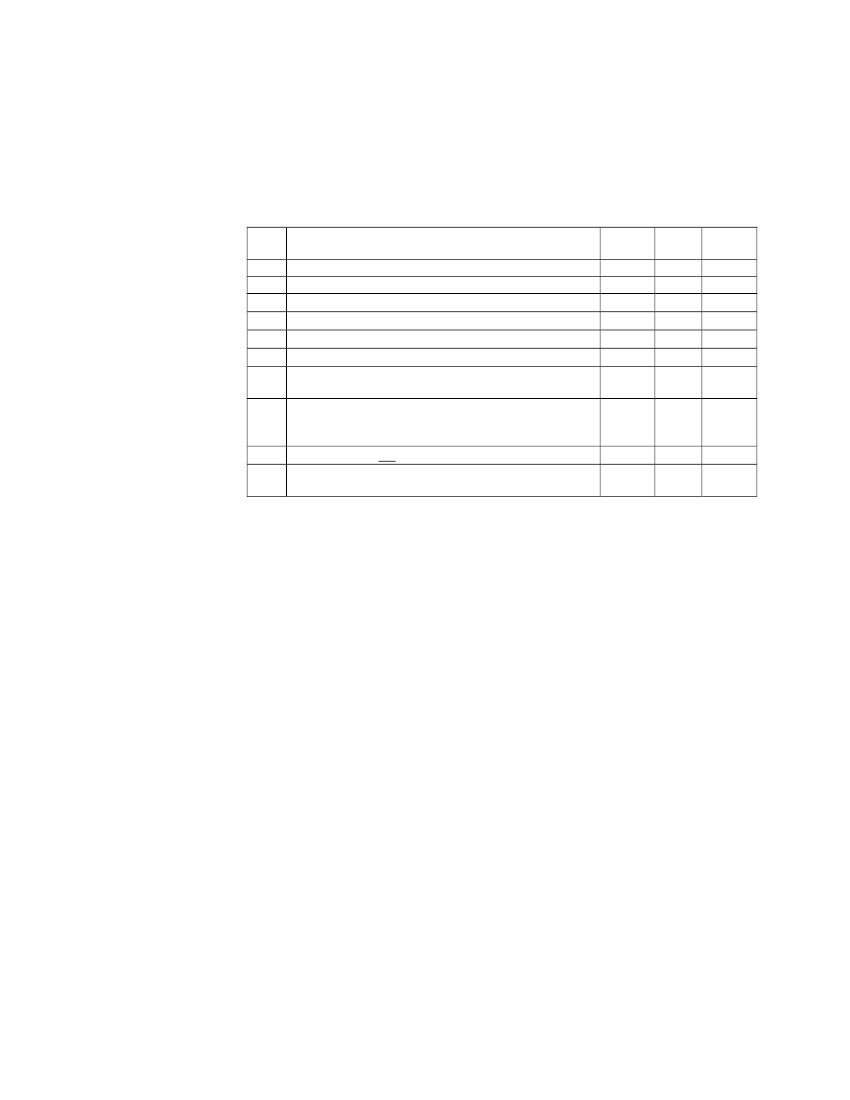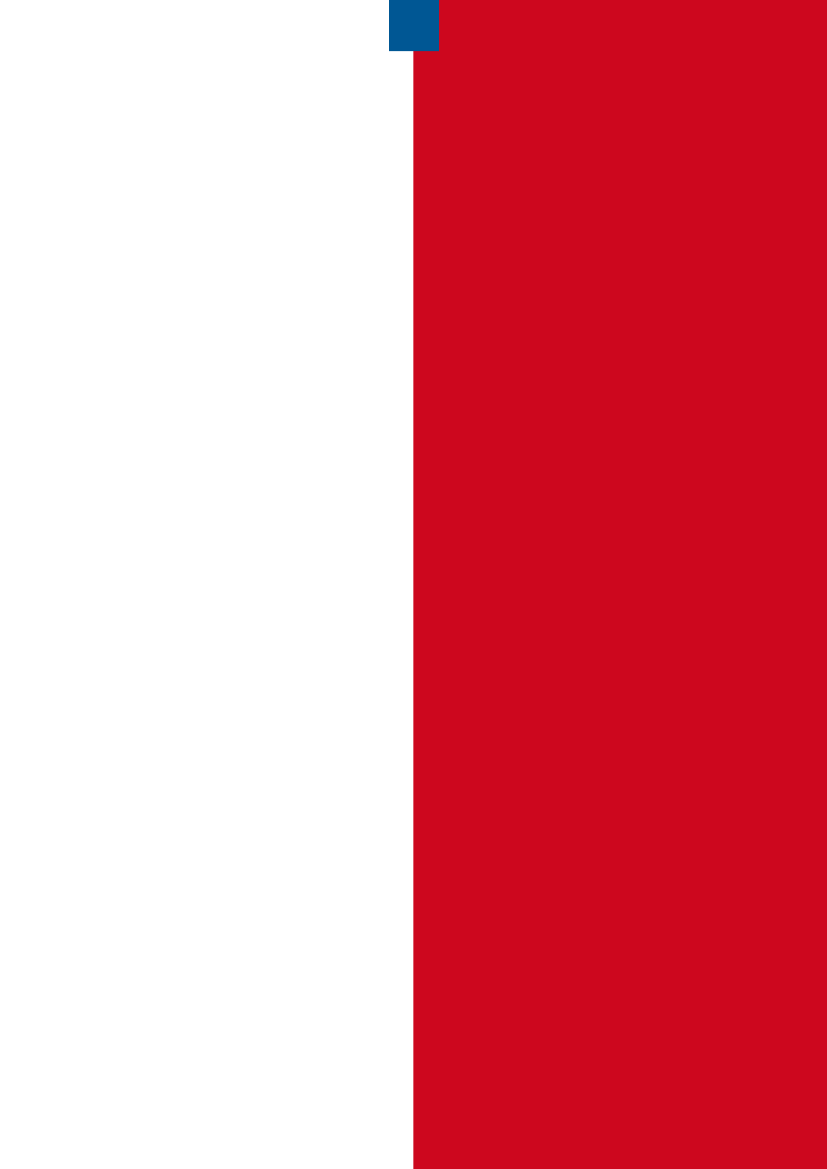Miljø- og Planlægningsudvalget 2010-11 (1. samling)
MPU Alm.del Bilag 409
Offentligt
International Board October 2010
Item 5(ii)
Inspections of Container lashings by the Dutch GovernmentFollowing questions raised by KIMO President Albert de Hoop and theQueen's Commissioner for Friesland. It was decided that the Port ofRotterdam, Transport and Water Management Inspectorate would carry outfurther research into the observance of the rules in the field of lashing andloading of containers in the form of a themed action.The objective of the themed action was to determine the degree to whichcontainers on board sea-going vessels are lashed according to the stipulatedstandards. Legal conditions have been stipulated for securing and loading(lashing) containers on board a sea-going vessel. Every container ship musthave an approved Cargo Securing Manual (CSM). It also describes the waythat unit loads should be secured and which (dynamic) forces could affectthis.The themed action was implemented in collaboration with the Port ofRotterdam by carrying out a quick scan of 57 container sea-going vessels inthe Rotterdam harbour area during the period from October to December2009. This themed action is an evaluation showing the status at the end of2009. This is a benchmark because it is the first measurement of its type. Noadministrative or criminal measures will be taken in this themed action.The most important findings are:1. All the ships inspected have a compulsory CSM onboard;2. 46 % of the inspected sea-going vessels do not lash containers inaccordance with the CSM regulations;3. The weights that are used for calculating the container lashing on boardthe sea-going vessels often (63%) do not correspond with the weightsstated in the ship's manifest.A full breakdown of the conclusions and recommendations are included insections 6 and 7 of the attached report.Links to International Action PlanThis work fulfils the commitment inSection 3of the KIMO International ActionPlan -Increase Influence Nationally and Internationally/Lobby NationalGovernments and the EU
1
International Board October 2010ObjectiveInfluence EUpolicyActionInfluence MEP’sandCommissionersActorSecretariatTargetForwardKIMOResolutionsto MEP’sandcommissionersRaiseissues atanyappropriateforaOngoing
Item 5(ii)DateNovember2010
MaritimeSafety
Campaign onexistingResolutionsSecretariat
Secretariat/Networks
Ongoing
Campaign fora Reduction inlostContainers
Raise issuewith MEP’s
2010
Action RequestedMembers are requested to consider and discuss the report and approve thefollowing actions. The Secretariat will forward the information to the MEP’s onthe Transport Committee and the DG MOVE. National coordinators shouldsend the report to their national regulators suggesting they undertake a similarinspection programme.
2
Themed action forlashings
Themed action for Lashings
DateStatus
30 August 2010
2
Themed action on lashings 30 August 2010
Colophon
Issued byImplemented by
IVW/ShippingPort of Rotterdam, Transport and Water Management In-spectorate30 August 2010
Date
3
Themed action on lashings 30 August 2010
Contents
1 Management summary2 Introduction/Reason7
5
3 Legislation 103.1Role and accountability
10
4 Research planning 114.1Introduction 114.2Objective/Research question 114.3Contents of themed action 115 Results 125.1Container weights 125.2Onboard inspections 136 Conclusions1517
7 Recommendations
Appendices1Lashing inspection form2Outline of results3Guidelines for the preparation of thecargo securing manualPreamble4Sources and literature
18202122
4
Themed action on lashings 30 August 2010
1
Management summary
About 18 million containers travel over the Dutch section of the North Sea annually.Between 5 and 67 containers per year fell overboard in the period 2004 to 2009 asa result of various incidents. Questions were asked about this by the Mayor of Am-eland and the Queen's Commissioner for Friesland. It was decided that the Inspec-torate would carry out further research into the observance of the rules in the fieldof lashing and loading of containers in the form of a themed actionThe objective of this themed action is to determine the degree to which containerson board sea-going vessels are lashed according to the stipulated standards. Legalconditions have been stipulated for securing and loading (lashing) containers onboard a sea-going vessel. Every container ship must have an approved Cargo Secur-ing Manual (CSM). It also describes the way that unit loads should be secured andwhich (dynamic) forces could affect this.The themed action has been implemented in collaboration with the Port of Rotter-dam by carrying out a quick scan of 57 container sea-going vessels in the Rotter-dam harbour area during the period from October to December 2009. This themedaction is an evaluation showing the status at the end of 2009. This is a benchmarkbecause it is the first measurement of its type. No administrative or criminal meas-ures will be taken in this themed action.The most important findings are:1. All the ships inspected have a compulsory CSM onboard;2. 46 % of the inspected sea-going vessels do not lash containers in accordancewith the CSM regulations;3. The weights that are used for calculating the container lashing on board the sea-going vessels often (63%) do not correspond with the weights stated in theship's manifest.It can be concluded that the rules are not being observed properly: it is true that allthe ships have a CSM on board, but in more than half the cases the lashings are notexecuted in accordance with the CSM. Furthermore if the CSM is observed it is un-clear whether the lashings can resist all the forces confronting the containers at sea.This also depends on the underlying calculations used.The number of incidents of containers falling overboard is relatively small in respectto the number of container ships and transported containers.On this basis the inspection has come to the conclusion that the lack of observanceis high, the risks are estimated as average (to low): containers fall overboard rela-tively seldom. However, if and when it happens the consequences could be consid-erable.
The most important findings are:The Inspectorate will submit the results to the Classification Societies and theship-owners (association) for discussion. The objective of this is to draw the at-
5
Themed action on lashings 30 August 2010
tention of these parties to the safety risks and to gain insight into the measuresthese parties take to improve the observance of the rules.The Inspectorate proposes that research is done into the forces occurring at seaand the impact of those forces on the stability calculations onboard the ships.The Inspectorate will exchange the results with other international supervisorybodies (The Australian AMSA held a similar themed action in the spring of2010).In view of the lack of observance the Inspectorate wishes to pay attention to thecontinued inspection of the lashings of containers in the future. The actual in-spection effort that will be included in the Long-Range Plan 2011-2015 will alsodepend on the risks and observance in other fields of Shipping and the availablecapacity.
6
Themed action on lashings 30 August 2010
2
Introduction/Reason
Reason for the investigation into the lashing of containersIn past years articles have appeared in the written (regional) press about the dam-age which could be caused by the contents of containers that fall overboard fromsea-going vessels The incidents were reason enough for the Mayor of Ameland andthe Queen's Commissioner for the province of Friesland and for the members of theDutch Lower House to express their concern to the Minister and State Secretary ofthe Ministry of Transport and Water Management. The concern led to a wide rangeof questions about the number of incidents, the number of containers falling over-board and tracking and finding the containers: the contents of the containers (dan-gerous materials from damaged containers especially can inflict serious damage tohumans, animals and plants if they get into the aquatic environment) and the or-ganisations involved in tracking the containers and their cargoes. The State Secre-tary for Transport and Water Management answered parliamentary questions in2008 about this subject and in 2009 the Mayor of Ameland and the Queen's Com-missioner provided a written reaction. In the State Secretary's reaction reference ismade to the request made to the Inspectorate to implement a themed action aboutsecuring containers.The Sea Shipping Policy Statement "Responsible shipping and a vital fleet" (2008),also announced that an investigation into securing containers will be implemented.Prominent attention has been paid in the Policy Statement to the environmental im-pact, such as restricting air and water pollution and safety by striving to reduce thenumber of shipping accidents. The Policy Statement describes the ambition in thecoming period to make the Dutch fleet the safest in the world. A separate paragraphis dedicated to reducing the loss of containers with dangerous contents. The PolicyStatement says the following about this.
In view of the risks to both shipping (incl. offshore fishing) and the coastcaused by containers falling overboard alongside the attention paid to theseissues within the concept of maintenance (PSC), this problem will bediscussed internationally to create a basis for international measures.The IVW will furthermore instigate an investigation if a Dutch ship loses itscargo on a large scale.When a foreign ship loses its cargo, the IVW will address the flag stateinvolved. Furthermore financial support will be given to thelashing@seaproject from the MARIN.
Incidents of containers falling overboardThe Coastguard and the Department of Waterways and Public Works publish annualfigures relating to incidents with container ships. For this the Department of Water-ways and Public Works uses the SOS database, the database of ship's accidents.The Coastguard publishes their long-range numbers in their annual report.
7
Themed action on lashings 30 August 2010
There was a very variable number of incidents in the period between 2004 and2009; on this basis a trend development cannot (yet) be determined. 2006 and2007 were two years during which many containers fell overboard; in contrast 2008was favourable and preliminary figures for 2009 show an increase in the number oflost containers.The Coastguard is the first body the captain must report to when his ship loses con-tainers. The Coastguard then passes this report on to the Department of Waterwaysand Public Works. The 2009 annual report from the Coastguard shows a graph ofthe number of incidents, the containers that fell overboard and the containers foundin last 6 years. The text next to a similar graph from the 2008 annual report saysthat 51 containers fell overboard in one incident (for that matter the containers inthe long-range overview in the 2009 annual report can no longer be seen on thegraph). It can also be deduced that a large number of the containers that havefallen overboard have been found again. All these containers were classified as non-hazardous. It does not report what happened to the cargo.Table 1. Number of incidents on the North Sea whereby containers were lost.YearsIncidentslost containersfound containers2004253200500020063674220072636120082530200943411
source: Coastguard annual reports 2008 and 2009, edited by the Inspectorate.
The Policy Statement reports that the North Sea is one of the busiest shippingroutes in the world with about 260,000 ship movements per year. More than110,000 ship movements are to and from the Dutch sea harbours. In addition about18 million containers are transported annually. In the period 2004 to 2009 between5 and 67 of them fell overboard. 10 of them landed up on the Wadden Islands, theothers did not. Tracking and recovery generally works well. The State Secretarywrote in her letter (January 2009) to the Mayor of Ameland:
According to figures made available to me by the Dutch Coastguard andthe North Sea Foundation roughly 15 containers per year or less have falleninto the North Sea from ships in the last 20 years. However in the last yearsespecially there have been regular incidents where large numbers ofcontainers have fallen overboard at the same time. In 2006 67 containersfell into the sea in 3 different incidents and in 2007 55 fell in as a result of 2incidents. I do think that such numbers should be seen in proportion to thevolume of container transport. In Dutch harbours about 8 million containersare transhipped annually. Since only 30% of sea transport on the North Seavisits a Dutch harbour, the actual container transport on the North Sea ismany times greater that 8 million per year.
Previous researchOne of the safety aspects given very little attention until recently is determining thecontainer cargo.
8
Themed action on lashings 30 August 2010
There are a few investigative reports about container ships from which containersfell overboard. The Inspectorate knows of the investigation by the MAIB (Marine In-vestigation Accident Branch) into the incidents on the P&O Nedlloyd Genoa on 27January 2006 and the Annabella on 26 February 2007. Furthermore the long-rangeresearch Review Current Practice (Lashing@sea) from the Marin is a source of in-formation. That report contains an overview of various incidents from which safetylessons have been drawn. The report also contains the following revealing generalnote:
"Overall statistics on damages /cargo losses are not available"
The Marin report does not mention if this theory also applies to the North Sea. Thewriters of the report furthermore state that the involvement of hazardous cargo in-duces much fuss/commotion and that extreme weather conditions cannot often befound in the statistics as the cause (under-reporting), but that loss of cargo fromunknown causes or where the cause appears to be uncontrollable is considered bythe sector to be disquieting. In the following chapter in the report in question thewriters give many reasons for containers falling overboard. However the cause isunknown in some recent incidents. What does stand out is that good stowage andsecuring of the containers according to the regulations and the actual weights anddimensions being taken into account reduces the risk of loss of the containers. Itoften emerges that maintenance to the lashings is overdue so that the cargo cannotbe secured properly.
9
Themed action on lashings 30 August 2010
3
Legislation
According to SOLAS 1974 every ship larger than 500 GT must be in possession of aContainer Secure Manual (CSM). The CSM is mentioned in chapter VI, Carriage ofCargoes. Paragraph 6 of article 5, Stowage and securing, says that containers mustbe loaded, stowed and secured during the passage in accordance with the CargoSecuring Manual approved by the Administration. SOLAS refers to the Guidelines forthe Preparation of Cargo Securing Manual (MSC/circ.745) for the contents of theSCM.Chapter VII article 3 of the SOLAS refers the rules in the IMDG code (InternationalMaritime Dangerous Goods) for containers with dangerous materials. The IMDGcode refers to the Cargo Securing Manual in paragraph 1.1.2.1.The CSM is the essential document. It defines the equipment needed to secure thecontainers during transport and which procedures are to be followed, such as actu-alisation and approvals. It also defines the requirements the equipment, lashings,twistlocks etc. must comply with. A separate paragraph describes the maintenance,the repairs and the replacement of the equipment. The CSM is specifically formu-lated for the ship concerned. Classification societies issue a certificate of approvalfor the CSM. They are responsible for the quality of the CSM and that the CSM hasbeen drawn up according to the guidelines. The CSM must be onboard the ship. Itwill be made available when supervisors request it.SOLAS Chapter VI regulation 2.3 states that before loading the shipper must guar-antee that the gross weight of the load unit corresponds with the stated weight.3.1Role and accountabilityThe Inspectorate (Flag state) is the "competent authority" for issuing CSMs to sea-going vessels sailing under the Dutch flag. From 2006 Classification Societies aremandated by legislation to issue the CSM to sea-going vessels sailing under theDutch flag and to check the legal regulations. In practice they issue them com-pletely independently and are responsible for the quality. The Inspectorate (flagstate) supervises the Classification Societies by means of audits and ‘reality checks’(specific inspections to determine that the classification societies are working in ac-cordance with the rules and agreements).The Inspectorate can only inspect classification societies and address them aboutsea-going vessels flying the Dutch flag, but classification societies work all over theworld and issue CSMs for other authorities. The collective factors are the worldwideregulations (SOLAS, IMDG) about the design, procedure and quality of the CSM.
10
Themed action on lashings 30 August 2010
4
Research report
4.1
IntroductionThe Port of Rotterdam and the Inspectorate inspected 57 container ships during themonths of October, November and December 2009. The HCC/-CMA incident roomhad selected these ships by using vessels belonging to the Port of Rotterdam to takephotos of incoming ships. All inspections were held in the Rotterdam port area. Bothshort sea (n=27) and deep sea ships (n=30) were inspected. Types of ships otherthan container ships were not inspected.Objective/Research questionThe objective of this themed action is to determine the degree to which containersonboard sea-going vessels are lashed according to the stipulated standards.To answer the research question the Inspectorate has looked to see whether therequired documents were available and whether the containers were actually se-cured according to the described procedures. The Inspectorate has also looked atthe procedures that were followed when the containers were secured (including theuse of the correct and authorised material).
4.2
4.3
Contents of themed actionA digital inspection form has been designed for the implementation of this themedaction which contains questions about the compulsory documentation (CSM) on-board and about the observations made onboard during the physical inspection. Theanswers to these questions are generally Yes or No. It is possible to add extra com-ments and calculations in some of the questions about weights. The questions areaimed at the captain or the first officer. This themed action is an evaluation of theobservance showing the status at the end of 2009. This is a benchmark because it isthe first measurement of its type.In1.2.3.4.5.short, the questions onboard were connected with the following points.Are the CSM and the lashing plans present, complete and valid?Are the procedures in the CSM being followed?Have the required parts also been included in the CSM?Is the described procedure also used and followed?Does the "the stackweight" in the CSM correspond with the stated containerweight on the ship's manifest?
The Inspectorate has carried out onboard inspections to determine the degree towhich reality onboard differs from the described procedural reality.The inspections also related to:1. Inspections of the lashed containers;2. Inspections of the lashing material used;3. Inspections of the quality and maintenance of the lashing material;4. Determining whether the containers were fastened properly by means of photosor when entering harbour.
11
Themed action on lashings 30 August 2010
5
Results
The answers by the captains or 1stofficers about following the procedures from theCSM contradict the actual inspections onboard. The captains or 1stofficers of mostof the ships inspected (87%) answered that the procedures from the CSM are fol-lowed while the inspections show that "everything is in order" for only 47% of theships.68% of the short sea ships are in breach of the law and 40% of deep sea ships.
Table 3. Results of themed action on lashingsnr26Number of inspections (N)Ships with CSM onboardst
shortsea57100%87%47%27100%85%32%
deepsea30100%90%60%
11 Lashings conforming to CSM,according to captain /1 mate34 Lashings conforming to CSM,according to observations of theinspector
Source: Transport and Water Management Inspectorate and the Port of Rotterdam themedaction on lashings
These answers show that the crews from a considerable number of the short seaships (n=12) loosen the lashings and twistlocks before the ship moors alongside thewharf. The last kilometres of the journey are used for this. This means that the con-tainers are not secured on the last part of the journey (on river, canal or harbour).The argument for this, when asked by the Inspectorate, is gaining time. The cranescan start unloading immediately after mooring.
5.1
Container weightsIt emerges from the questionnaire that not everything is in order with the weightand stowage of the containers. In practice not all the parties know whether theweight of the container stated by the shipper corresponds with the actual weight.Nobody makes a fuss. The general problem with the container weight is that theshipper/owner of the goods stipulates the weight. According to SOLAS this is an ob-ligation. This weight will be on the documents transferred to the next parties in thetransport chain without the containers actually being weighed again. All the partiestherefore conform to the document formulated by the shipper. These are then the"paper" weights, which will also be used in the computer calculations onboard.The container crane does not always weigh the container when it is hanging on thecrane. 90% of the captains answered that the weights are not recalculated. Deter-mining a weight that is as low as possible could be of interest to the shipper. Afterall, the cost of transport depends on weight. Therefore the paper weight is often lessthan the physical weight.Most mistakes are made when piling containers up in a "stack". The heaviest con-tainers were not always at the bottom with the lighter and empty ones on top; mis-
12
Themed action on lashings 30 August 2010
takes had been made in stacking the containers on about half of the ships (46%).On three ships it emerged that the total weight of the stacked containers was morethan the maximum weight stated in the CSM. The number of layers of containersproved in most cases (90 %) to correspond with the maximum number of stackedcontainers shown in the CSM.The container lashing computer used onboard only gives a warning when the maxi-mum weight is exceeded per row not per layer of stacked containers. These com-puter programmes which are also used for the stability calculations do not come upto the mark nowadays. They are in need of upgrading. The computer programmescalculate using the (often less than actual) weights from the documents and makeuse of the parameters needed for the force calculations and have been engraftedwith the normal average values of wave height, wind strength, wind direction, swelletc. While on the other hand it appears from the incident investigations that (ex-treme) exceptional situations, of which the programmes take no account, are thebasis of the incidents (source: MAIB, Maritime Accident Investigation Branch inGreat Britain and the ATSB, Australian Transport Safety Bureau in Australia).In 63% of the ships there proved to be a difference between the weight used in thecomputer calculations and the weight given on the manifest.The Inspectorate also determined that captains did not check the weights on sea-going vessels not using a computer programme.On the other hand it is remarkable that almost 90% of the ships have the computercalculation and the manifest available on board. Moreover 80% of the captains and1stofficers questioned indicated that both were compared but nothing more. Nothingis done about the difference (is not relevant). It emerges from discussions withthem that generally they know that the given document weights are not (very) reli-able. Also the gross and net weights can become confused in daily practice and thewrong one used. The correct stability of the sea-going vessel is more important. TheInspectorate is at this moment carrying out an investigation into the stability.
5.2
Inspection onboardThe Inspectorate has checked several bays per ship. The inspection involved thewhole ship only in an exceptional case. The everyday course of events onboardthese container ships differs from the procedures described in the CSM. The Inspec-torate saw that there was a considerable difference between the answers received(from the captain and the 1stofficer) and the results of the inspections.
The availability of the CSM was no guarantee that the procedures were also good.The CSM has been formulated and issued within the responsibility of the Classifica-tion Society. A conflicting answer was received after a long wait when the contentsof a CSM were inquired about at two Classification Societies. When continuing to askquestions about this subject at one Classification Society it emerged that their oneexpert was working abroad.During these inspections inspectors noticed that 6 ships had used defect lashings orother material to secure the containers. On one ship for example inspectors deter-mined that the "lash-eyes" secured to the deck were defect and could no longer beused.
13
Themed action on lashings 30 August 2010
According to the CSM the defective lashing material should be kept in a separateand isolated place on the ship. It emerges from the inspections that this is not al-ways the case. About 20% of the ships, short sea ships in particularly, do not com-ply with this rule from the CSM.Many ships, all deep sea ships in particularly, make use of a small number of spe-cialised companies to secure the containers, the so-called "shore gangs". The cap-tain then fails to check whether the lashing material also conforms to the (technical)requirements of the CSM. Furthermore it emerges that various ships cannot showcertificates for the lashing material. The captain will assume that the certificates"are at headquarters" just like the other documents of the entire fleet will be pre-sent. The crew lashes the containers down themselves on short sea ships.Inspectors observed that the lashing material is often not described properly, thatthe wrong lashing material is used, that single lashings are being used instead ofdouble and that maintenance is not being carried out thoroughly.
14
Themed action on lashings 30 August 2010
6
Conclusions
1.The CSM is always onboard and approved by the Classification Society.2.The regulations in the CSM are not being observed on a large number of theinspected ships.3.It is noticeable here that, prior to this inspection, the crew onboard usuallystated that these regulations were being observed.4.Many ships proved to have shortcomings in the use of the lashing material withwhich containers are secured. Captains take unnecessary risks with this. Cap-tains probably do not realise that containers falling overboard is a regular occur-rence.5.During the loading process too little account is taken of the forces exercised dur-ing transport on the ship and the cargo. Correct securing of the containers,which must also be properly stacked with account taken of the weight, can re-duce the risk of lost containers.6.The captain is not always aware of what actually happens. He is (often) com-pletely dependent on the data supplied by those involved on dry land and hedoes not check whether the data is correct of complete. This is not possible inmany cases simply because he does not see the documents or load units earlier.With deep sea transport the captain relies on the quality and effort of the cargolashers who lash the containers. It is not clear which unwanted situations thiscauses. Inspectors noticed defective or uncertified lashing materials on board.For instance inspectors saw worn, poorly maintained or broken lashing materialon 6 ships.7.The computer programmes used for loading too often calculate using lower andaverage parameters regarding the forces applying onboard. Incident investiga-tion reveals that containers falling overboard can be attributed to the extremeforces to which the ship and cargo are exposed. If the computer programmeswere to take these extreme values more into account the force calculationswould be more accurate.8.The lashing computers are not certified by Classification Societies.9.The Classification Societies have to work carefully when approving the qualityand completeness of the CSM. The captain or 1stofficer will have to ensure thatthe procedures are actually followed in practice so that the CSM is not just paperreality. The regulations about loosening containers must be better observed.Lashings on the containers are still too frequently loosened during the last kilo-metres of the voyage so that unloading can begin immediately after mooring atthe terminal. Working with only the "paper" document weights of containersbrings the usual risks although it is easy to use the actual weights onboard.Stacking the wrong containers and "heavy containers high and empty containerslow" brings with it great risk. The stability is not guaranteed when using only the"document weights".10.Incidents with containers that fall overboard are registered by the Coastguardand the Department of Waterways and Public Works. It is noticeable that the in-cident reports include (too) little about the nature and quantity of the cargo. Theregistration could be extended to include this. Not all the incidents are investi-gated or the causes analysed.
15
Themed action on lashings 30 August 2010
In this themed action the Inspectorate has not been able to determine that it is bydefinition more unsafe because the procedures are not being observed properly.The essence of the conclusion is that the rules are not being observed properly: it istrue that all the ships have a CSM on board, but in more than half the cases thelashings are not executed in accordance with the CSM. Furthermore the conclusionis that the underlying calculations used for lashing are cause for concern. In otherwords: even if the CSM was observed, it remains to be seen if the lashings couldresist all the forces that could confront containers at sea.The number of incidents of containers falling abroad is relatively small in respect tothe number of container ships and transported containers. That does not alter thefact that every year (in an absolute sense) a substantial number of containers arelost. It must also be mentioned that only the officially registered incidents and lostcontainers have been counted in this investigation. No large accidents resulting fromcontainers falling or being washed overboard have been reported up until now. Therisk is that containers could collide with ships and platforms. In addition the possibil-ity of water pollution exists. There is a chance that dangerous substances whichcould come into contact with civilians and environment will be released when con-tainers wash up onto land.On this basis the inspection has come to the conclusion that the lack of observanceis high, the risks are estimated as average (to low): Containers seldom fall over-board, however, if they do and it goes wrong the consequences would be consider-able.So the Inspectorate has placed ‘lashings’ in the observation- risk matrix*.
*
One of the starting points when using the inspection capacity is the risk-based supervision.This means that: the Inspectorate determines its interventions and chooses its inspection ca-pacity based on a combination of two quantities, the observation level of the core stipulationsfrom legislation and the risks of the transport. The Inspectorate has developed the Observationrisk matrix for this purpose. A certain form and intensity of supervision is chosen in the matrixdepending on the position of the market segment or subject.
16
Themed action on lashings 30 August 2010
7
Recommendations
On the basis of these conclusions the inspection recommends the following.The Inspectorate will submit the results to the Classification Societies and theship-owners (association) for discussion. The objective of this is to draw the at-tention of these parties to the safety risks and to gain insight into the measuresthese parties take to improve the observance of the rules.For the discussion with the Classification Societies:The Classification Societies should have sufficient knowledge available to formu-late and issue the CSM;The Classification Societies should substantiate their responsibility for the qual-ity of the CSM and the fulfilment of the legal requirements;The Classification Societies should ensure that the compulsory force calculationsin the CSM are sufficiently able to meet the actual forces occurring during seatransport.For the discussions with the ship-owners:To have the procedures in the CSM for lashing the containers also implementedin practice;The computer programmes should use both the actual weights of the containersand the realistic values of parameters for force calculations.The results will be brought to the attention of the Directorate-General for CivilAviation and Maritime Affairs policy department of the Ministry of Transport andWater Management.The Inspectorate proposes that research is done into the forces occurring at seaand the impact of those forces on the stability calculations on board the ships;The Inspectorate will exchange the results with other international supervisorybodies (The Australian AMSA will hold a similar themed action in the spring of2010).In view of the lack of observance the Inspectorate wishes pay attention to thecontinued inspection of the lashings of containers in the future. The actual in-spection effort as will be included in the Long-Range Plan 2011-2015 will alsodepend on the risks and the observance in the other fields of Shipping and theavailable capacity.
17
Themed action on lashings 30 August 2010
Appendix 1
Lashings inspection form
Transport and Water Management InspectorateShippingInland Shipping and Dangerous MaterialsLashings inspection form559 Date.…./…../….. Point of time…..…. Inspector's code………….Number Question
GENERAL QUESTIONS
1234567891011121314Ship's nameIMO numberFlagLast Port of call/Next Port of callDeep sea/Short seaCSM - CLP QUESTIONS
CSM availableName of classification society or competent authority issuingCSMNumber of CSMMoment of inspectionInspection of bay(s) or whole shipLashings applied conform CSM (question to chief off if fol-lowing CSM)if no mention reason in remark areaYes No Remark/text
Lashing materials listed in CSM (minimum information Type,Quantity, and MSL (Maximum Securing Load))All portable securing devices visually examined and greasedasnecessary at intervals mentioned in CSM ch. Inspection andmaintenance1516Records of these inspections kept on board (check makecopy)Before use (whether fixed or portable) equipment visuallyinspected that there are no defects, all moving parts operat-ing properly171819202122Securing operations completed before the ship leaves berthSecuring operations planned conform CSMLashings applied check before leaving berth by ships staffAre lashings released before the ship is safely secured atthe berthif no mention reason in remark areaNumber of portable securing devices enough to ensurecopy enclosed / copy not made/ notavailablecopy enclosed / copy not made/ notavailableNumber Question
arrival - departure - during load-ing/dischargingbaywhole shipGL-LR-DNV-ABS otherdeep sea/short seaYes No Remark/text
18
Themed action on lashings 30 August 2010
containers are lashed conform the CSM (see copy inventorylist)Number Question
STACK WEIGHT
23242526Mass less than maximum stack masses mentioned (in-spected bay)Sequence of masses in stacks followed (inspected bay)Stack height equal or less than maximum stack height (in-spected bay)Choose one or more containers on the shipIs there a difference between the weight recorded on papermanifest or transport document and the weight used inship's cargo computer2728Difference in weight between paper and computerCopy of paper weight manifest/transport document andships cargo computer made and enclosedNumber Question
29Container weight details in ships cargo computer areweights conformAsk chief off and cross one possibility303132Chief officer is comparing paper and electronic/computerweightWeight of container(s) checked by crane or weighbridge onshoreDifference in crane/weighbridge weight and transportdocumentINSPECTION ON DECK
333435363738Number Bay inspectedLashings conform CSM ? If no give reasonif no mention reason in remark areaDuring inspection damaged portable/fixed lashing devicesfound ?if yes mention deficiency remark areaDefective portable lashing equipment put aside into a suit-able separate location3940on deck check one number of portable lashing equipment ifit is equal to identification number mentioned in CSMLashings applied by crew or shore gangcrewshore gangBay nrenclose documentsYes No Remark/text
transport documentmanifest electronic data fromagent/shipping company others mentionNote differenceYes No Remark/text
19
Themed action on lashings 30 August 2010
Appendix 2:
Outline of results
total ofnr.Number of inspections61134202426CSM onboardLashings conform to CSM, according to captain 1stofficerLashings conform to CSM, according to the InspectorLashings, loosened during sailingThe containers are stacked in the correct (on the basis ofweight)Difference between container weight in documents andcomputer programme onboard (selection of one con-tainer)3136The container is not weighed by the crane or weighbridgeInspectors found defective or damages lashings duringinspections.89%10%63%all ships57100%87%47%21%45%
shortsea27100%85%32%44%37%56%
deepsea30100%90%60%0%53%70%
85%10%
93%10%
20
Themed action on lashings 30 August 2010
Appendix 3 GUIDELINES FOR THE PREPARATION OF THECARGO SECURING MANUALPREAMBLEIn accordance with the International Convention for the Safety of Life at Sea, 1974(SOLAS) chapters VI, VII and the Code of Safe Practice for Cargo Stowage and Se-curing, cargo units, including containers shall be stowed and secured throughout thevoyage in accordance with a Cargo Securing Manual, approved by the Administra-tion.The Cargo Securing Manual is required on all types of ships engaged in the carriageof all cargoes other than solid and liquid bulk cargoes.The purpose of these guidelines is to ensure that Cargo Securing Manuals cover allrelevant aspects of cargo stowage and securing and to provide a uniform approachto the preparation of Cargo Securing Manuals, their layout and content. Administra-tions may continue accepting Cargo Securing Manuals drafted in accordance withMSC/Circ.385 provided that they satisfy the requirements of these guidelines. Ifnecessary, those manuals should be revised explicitly when the ship is intended tocarry containers in a standardized system.It is important that securing devices meet acceptable functional and strength criteriaapplicable to the ship and its cargo. It is also important that the officers on boardare aware of the magnitude and direction of the forces involved and the correct ap-plication and limitations of the cargo securing devices. The crew and other personsemployed for the securing of cargoes should be instructed in the correct applicationand use of the cargo securing devices on board the ship.
21
Themed action on lashings 30 August 2010
Appendix 4:
Sources and literature
Verantwoord varen en een vitale vloot (Responsible shipping and a vital fleet):Shipping Policy Statement 2008Ministry of Transport and Water ManagementThe Netherlands Coastguard Annual Report 2008Lost and found containers in North Sea 2005-2009Coastguard provisional overview of 2009Network evaluation of North Sea 2008, MARIN report Nr. 23715.620/2Customer RWS-Dienst NoordzeeReview Current PracticeContainer Shipping MARIN July 2007. Revised draft (Project: Lashing@sea)Report nr. 197817-1-TMGuidelines for the preparation of the Cargo Securing Manual(SOLAS CH VI)MSC/Circ.745 13 June 1996Lower House questions:oParliamentary questions about containers with arsenic pentoxide on theseaDGG/V-04/000435/VV5 February 2004oParliamentary questions from MP Samson to the Minister of Transportand Water Management about potential lost cargoes of arsenic pentox-ide north of TexelHKW/TFW2004/57020 January 2004oParliamentary questions from MP Poppe about transport by ship of con-tainers with dangerous materialsVenW/DGTL-2008/4987 February 2008oParliamentary questions about ensuring the safety on the water aroundthe Wadden IslandsRWS/SDFG/NW2008/776/671002 September 2008oLetter from the State Secretary for Transport and Water Management tothe Mayor of the Municipality of Ameland about containers in seaDGTL-2008/38029 January 2008Various articles from the national and regional newspapers Friesch Dagblad;Nieuwsblad Transport; Persbureau Ameland; De Telegraaf ; IJmuider Courant;NRC HandelsbladResponse to thePacific AdventurerIncident. Report of the Incident AnalysisTeam, Strategic Issues Report, Australian Government. Australian MaritimeSafety Authority
22
